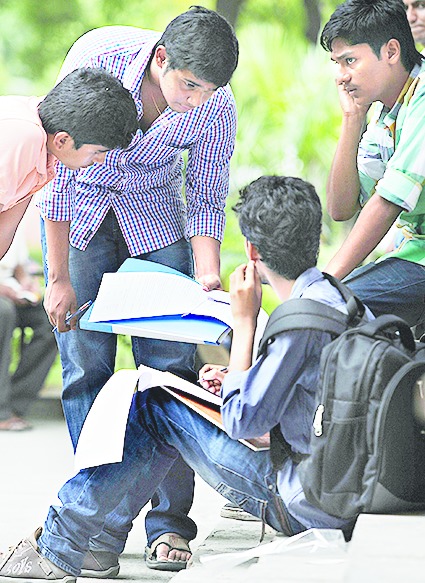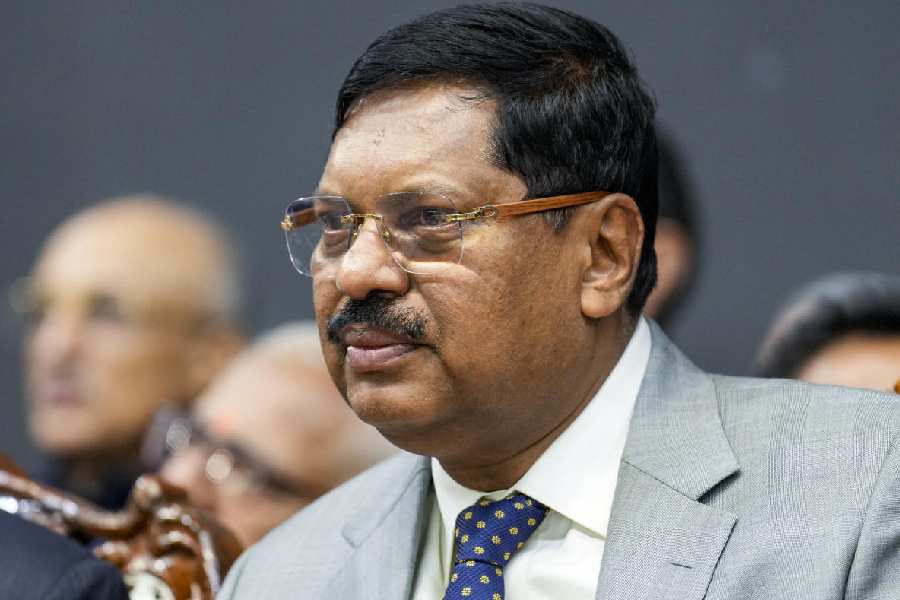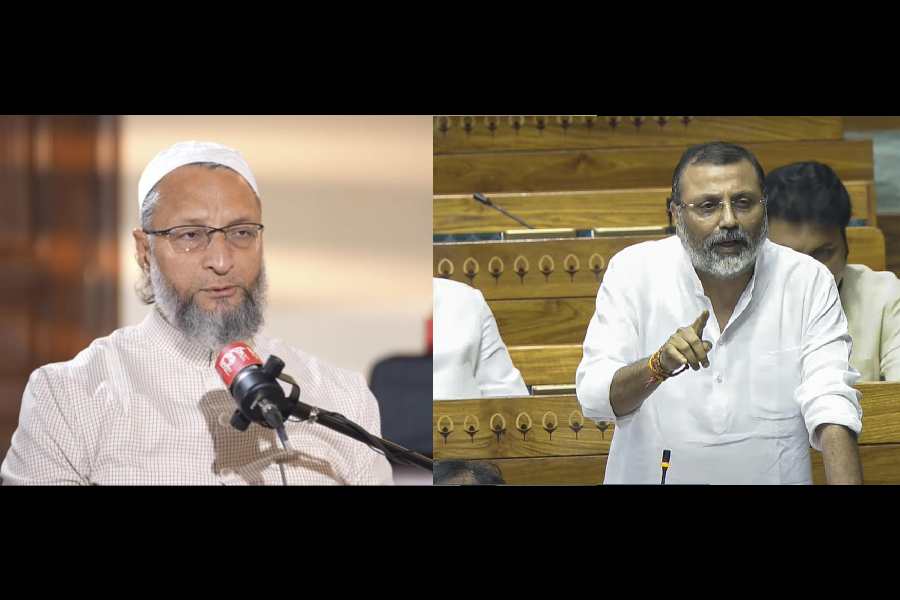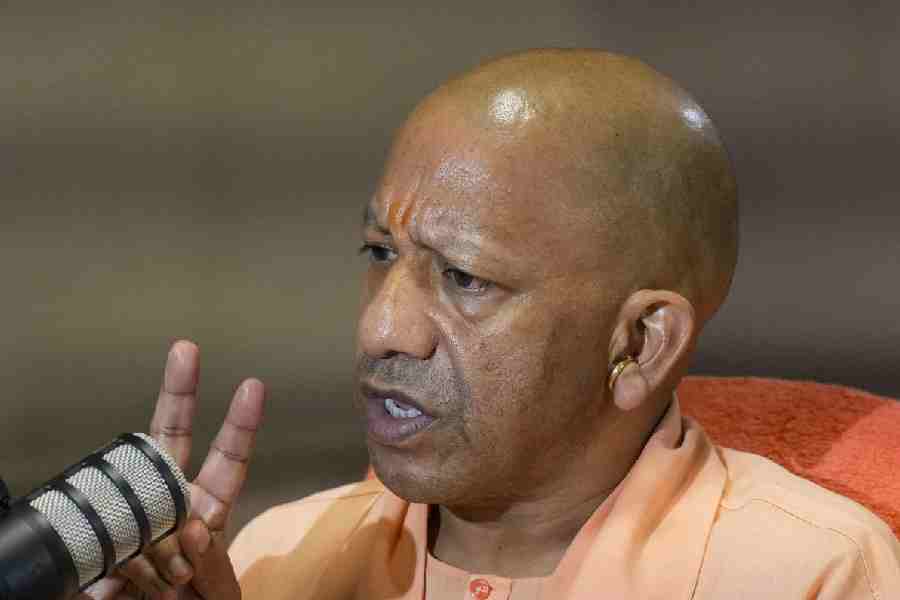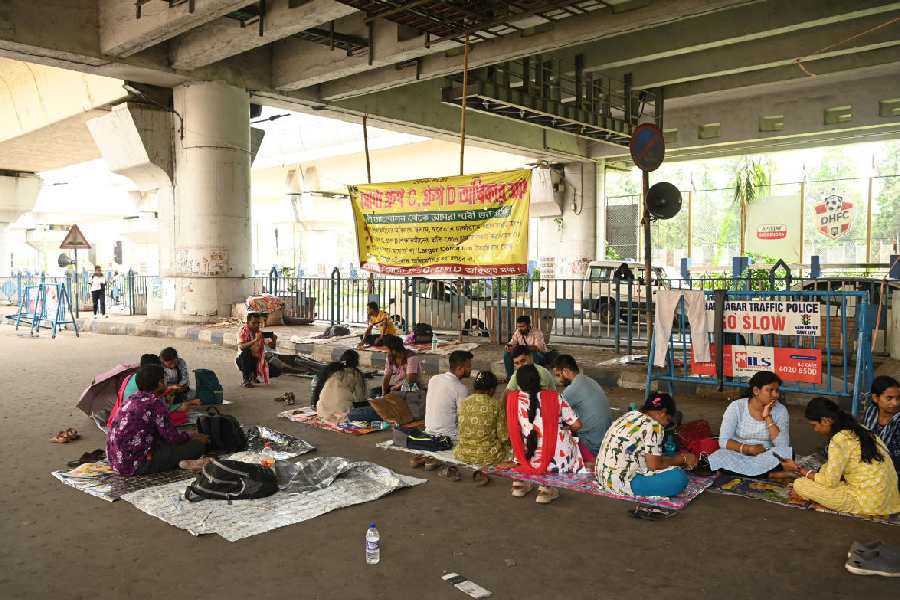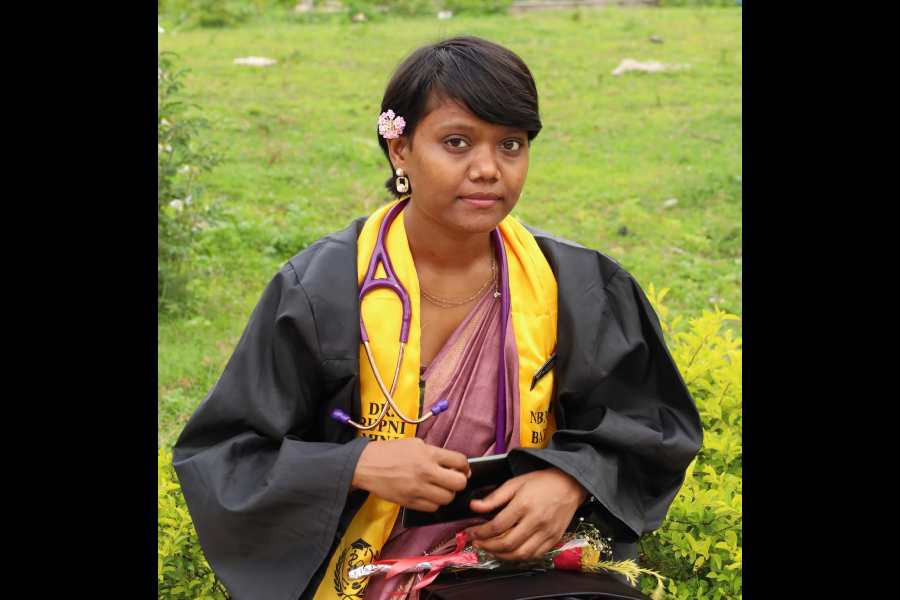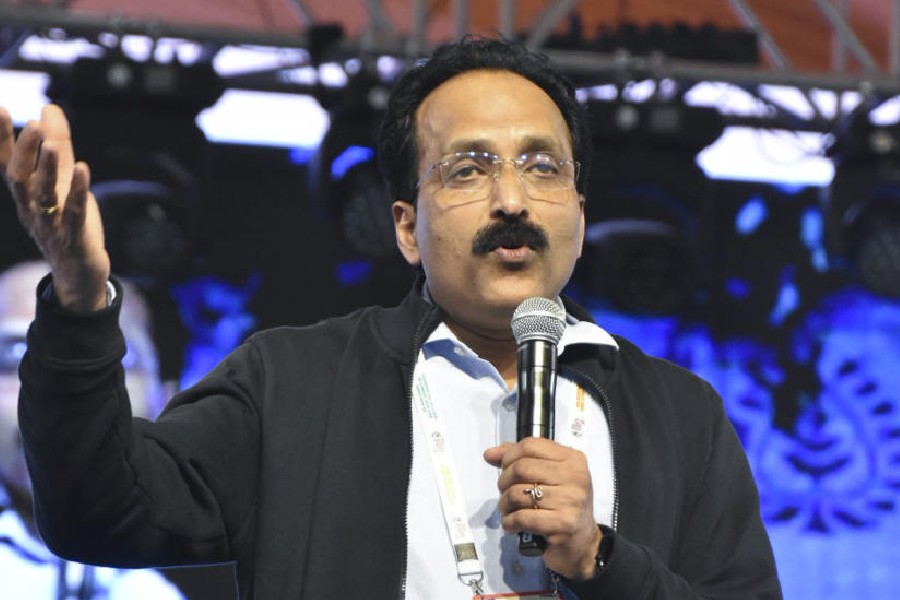
For the non-Bengali like me, Puja tourism is about food. In the early Nineties, when I first began visiting pandals in Chittaranjan Park, I was baffled by the non-doing nature of the main enclosure that hosted the pratima. We seemed always to get there before or after the aarti so to the uninitiated outsider, the setting felt like a prelude to something that never happened. The first time the pandal and the pratima made sense to me as performance was years later while watching the film, Parineeta, when I saw a particularly energetic version of the dhunuchi dance. Except that the principal dancer was Sanjay Dutt and while I'm used to suspending disbelief at the pictures, it was hard to take in Munna Bhai in this new bhadralok avatar without giggling.
I think one of the reasons people inspect the pratima so closely is that for the most part, there's so little else to do. I used to pay particular attention to the slain (or in the process of being slain) Mahishasura for the same reason that people watch action movies: for the gore. The first year that I toured the pandals, the Mahishasuras were small, pitiable figures, notable mainly for the bloody wound that Durga's trident had made, but I later encountered large, heavily muscled versions. What they had in common was a haplessness that was oddly moving. Durga herself seemed oblivious to the asura she had killed, as she looked into the middle distance, remotely smiling. It was her lion that seemed properly involved in the slaughter, his bloodied teeth and claws dug into Mahishasura's body which was often a bilious green and who can blame him? The saddest figure in the composition was the discarded buffalo, supine and hollowed out at the base of the tableau, like a filmi extra.
My disenchantment with the tableaux had something to do with the fact that the first one I saw had Durga as a dead ringer for Hema Malini. The prig in me was offended: I had come looking for Bengali iconography and had found a still from a Bombay mythological instead. Looking back, though, I can see the point of the likeness: if the artist had been looking to model beatific blandness, he couldn't have done better.
It was in the food stalls that I found consolation, in the deep fried, keema-stuffed porotas made out of maida. As someone born and raised in Delhi on first-rate Punjabi parathas, after that first taste of the Bengali version, I couldn't understand why north Indians bothered with aata when maida's elastic chewiness was self-evidently better. The same principle holds for pooris; why not, in a frank, manly way acknowledge superiority and eat luchis instead?
The first time I encountered festive Bengali food was in 1983 when I travelled up to Calcutta for a friend's wedding. We stayed with the groom in his parents' house for several days and on the first day we settled down to eat lunch at a very long table flanked by benches. It was a catered meal and I still remember the name of the caterer: Bijoli Grill.
We were served rice and dal and mashed potatoes which, in retrospect, I recognize as alu makha but at the time I thought was a kind of alu bharta. The dal was excellent and the sharpness of the mustard oil mixed into the potatoes was a new and adventurous taste. As someone who had been raised a vegetarian before going over to the dark side, I understood dal, chawal and alu and I made a meal of it. I was a little surprised at the plainness of the food, but it was barely noon so I decided it was meant to be a kind of brunch and there were after all, dozens of people to be fed.
After stuffing myself, I made to get up and leave. This was awkward because I was sitting on a running bench so the thin young man to my right had to get up as well to make space for me to lever my legs out from under the table. I was midway through this manoeuvre when Mrs Sarkar, Abhijit's mother, materialized in front of me looking concerned. "Where are you going?" she asked. "Is there something wrong with the food?" I said it was wonderful but I had eaten enough. "Enough?" she repeated, baffled. "But we have just begun!"
I had never eaten a desi meal in courses before. Where I came from you ate your staple - dal, roti, paratha - surrounded by the sabzis and chutneys and raitas and pickles that constituted the meal. An amused Hyderabadi friend once described this to me as 'your katori culture'. So when I was nudged back into my place on the bench, I realized that the wedding guest in Bengal needed to be a long-distance runner. After that initial course, we ate two kinds of fish, rui and ilish. This was followed by a mutton curry which I know now was kosha mangsho. All of this was accompanied by several servings of rice. After we had done with the meat, we moved on to chatni, a tomato chutney mined with dates, raisins and other sweetness that I wasn't sure I liked till I combined it with rice and then it was magical.
I was feeling faintly sick by then because I had never eaten so much before and I hadn't paced myself. This was around the time that I began to attend to the thin young man to my right. He was extraordinarily thin, in that hipless, hollow-cheeked way that's special to India. He was virtually two-dimensional. And yet, he made his way through the rui, ilish and mangsho like a human tapeworm, helping himself more than once to each sort of fish and then the mutton and now he was doing a steady free-style through the chatni, never pausing to breathe or burp. We finished with three kinds of mishti; I use 'we' loosely, because I had fallen by the wayside by then. My participation was vicarious; I just watched my neighbour do the treble with ease, this Abebe Bikila of the six-course meal.
We ate like this every day, twice a day, for three days. But this, I was assured, was nothing; the pièce de résistance according to the gourmands who surrounded me, was yet to come. These were the king prawns that would be served at the bou bhaat, the reception dinner the day after the wedding. I never got that far; I only ever heard Abhijit's king prawns described because by the evening of the wedding reception, I was a broken man, running a shuttle service to the nearest loo, my digestion destroyed by a regimen of gluttony that asked for more endurance than my north Indian constitution could supply.
There is a reason why Abhijit, like many Bengali men, always carries a little pink bottle of Gelusil or its alternative, the orange Aqua Ptychotis. No culture can eat like this without chronic heartburn. But eating was never the same again after that 1983 wedding. I learnt to eat my way through fish heads as they squinted at me, to tease hair-thin bones out of ilish, to lay by enough room for the sweet at the end. When my niece declared the other day that she was going pandal-hopping with friends, I told her to skip the pratimas and home in on the porotas. She was kind enough to report that I was right. It's a simple truth that I learnt three-and-a-half decades ago: Bengali culture is basically food.

